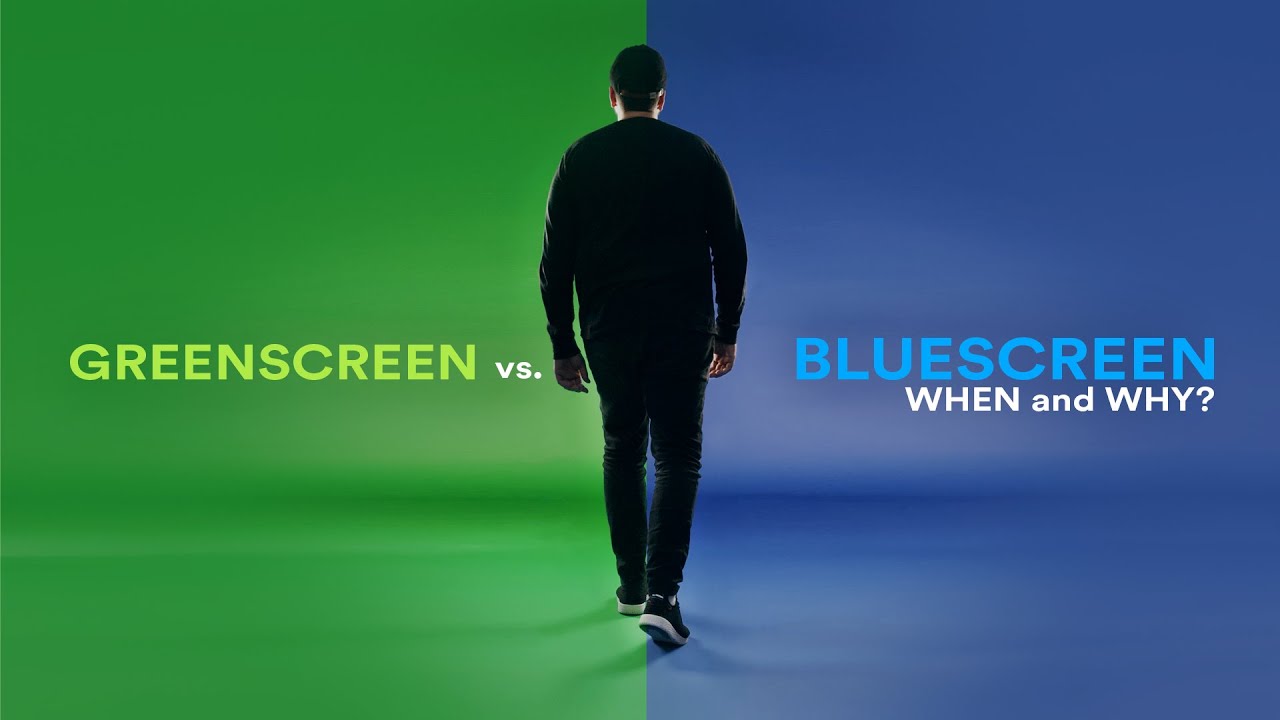You have probably heard the term "green screen" if you have any interest in filmmaking, but are you familiar with the concept of "blue screens"? In this post, we'll go over all of the differences between blue screen and green screen.
Although both are commonly utilized in the industry, blue screen backgrounds might be employed a little less frequently than green screens. You have come to the correct location if you're wondering how blue or green screen technology operates, what makes blue or green screens different, or why you should utilize blue or green screen backdrops.
Why It Is Used
In order to make it easier for video editing software to separate the subject from the background using a technique known as "chroma keying," which essentially removes the background and replaces it with a different one during post-production, blue and green screens are used because they are distinct colors that differ greatly from the majority of human skin tones and clothing colors. Blue or green colors are popular backgrounds for filmmaking because they’re different from most human skin tones, hair colors, and clothing.
Blue screen vs green screen
You already understand what a blue screen background is if you know what a green screen background is and how it functions. When comparing blue screen to green screen, there are distinctions. Both green and blue screens are used for the same purpose: to use Chroma Key technology to place subjects in front of a projected background. Although they are used for the same purpose but there are some situation where they are used differently.
Use of Blue and Green Background depends on Several Factors
- Lighting: Luminance, or how much light a color reflects, is one important consideration. When you want your images to appear bright and well-lit throughout the day, a green screen is a preferable option because green backgrounds are far more luminosous than blue ones. However, in situations where there is less need for light, a blue screen can be useful. A blue screen is the best option if you're attempting to composite around an actor in a nighttime scene. Because it's darker, less light will reflect off of it, resulting in less color spill that needs to be cleaned up after production. Blue is a higher frequency colour than green and thus gives a more distinct keyed image with greater contrast.
- Costumes and hair color : You should utilize a blue background if the character in the scene you're filming really needs to wear green, and vice versa. However, issues can still arise from colors that don't blend in with the background. Because of the way light reflects off of it, blond hair can be challenging to key out on a green screen,there is a color spill and it is almost translucent. Blond contrasts considerably more strongly with blue screen.
- Environment: When filming a blue or green screen in an outdoor setting, the colors of your surroundings should be just as important as the clothes of your characters. It is better to use a blue screen if you are in an area where grass and trees will be visible in your photo. Green is the best option if there is a sizable body of water in the scene.
- Fine details : Blue screens are less bright, thus there is less possibility of color spilling beyond your performers' edges. Using a blue screen can assist ensure that there is far less color spill when you are filming a shot where the performer and the chroma key background are near together.
The correct backdrop color and chroma key technology can open up a whole new universe of possibilities for your picture, whether you're filming a quiet indie character study or a sci-fi blockbuster.
- Software: Most film editing software is already prepared to key out green backgrounds.
In conclusion, the green screen remains the most preferred option for chroma key compositing despite blue's dominance since it is less expensive and has less surface depth. However, there are situations in which you might need to use both screens. There is more than one perfect answer.
Interested in the complexities of filmmaking behind the scenes? You can also become a key player in the process. Receive instruction in both basic and advanced VFX techniques. Enroll for the VFX courses in Maac Institute and learn the detail of Visual Effects.


